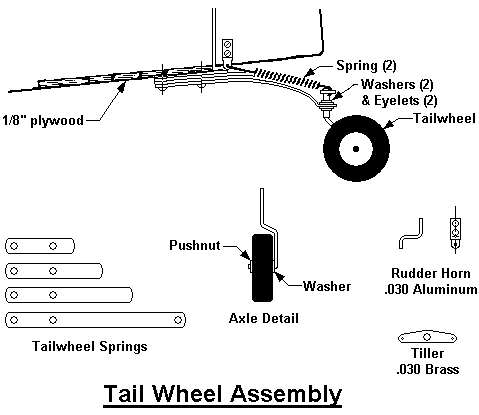his tailwheel assemby looks good
and it is functional. The weight that is added by this type of
tailwheel is surprisingly low. The assembly is functionally far
superior to plastic tail wheel assemblies and will outlast almost
anything that is commercially available.
Return to Construction Guides

